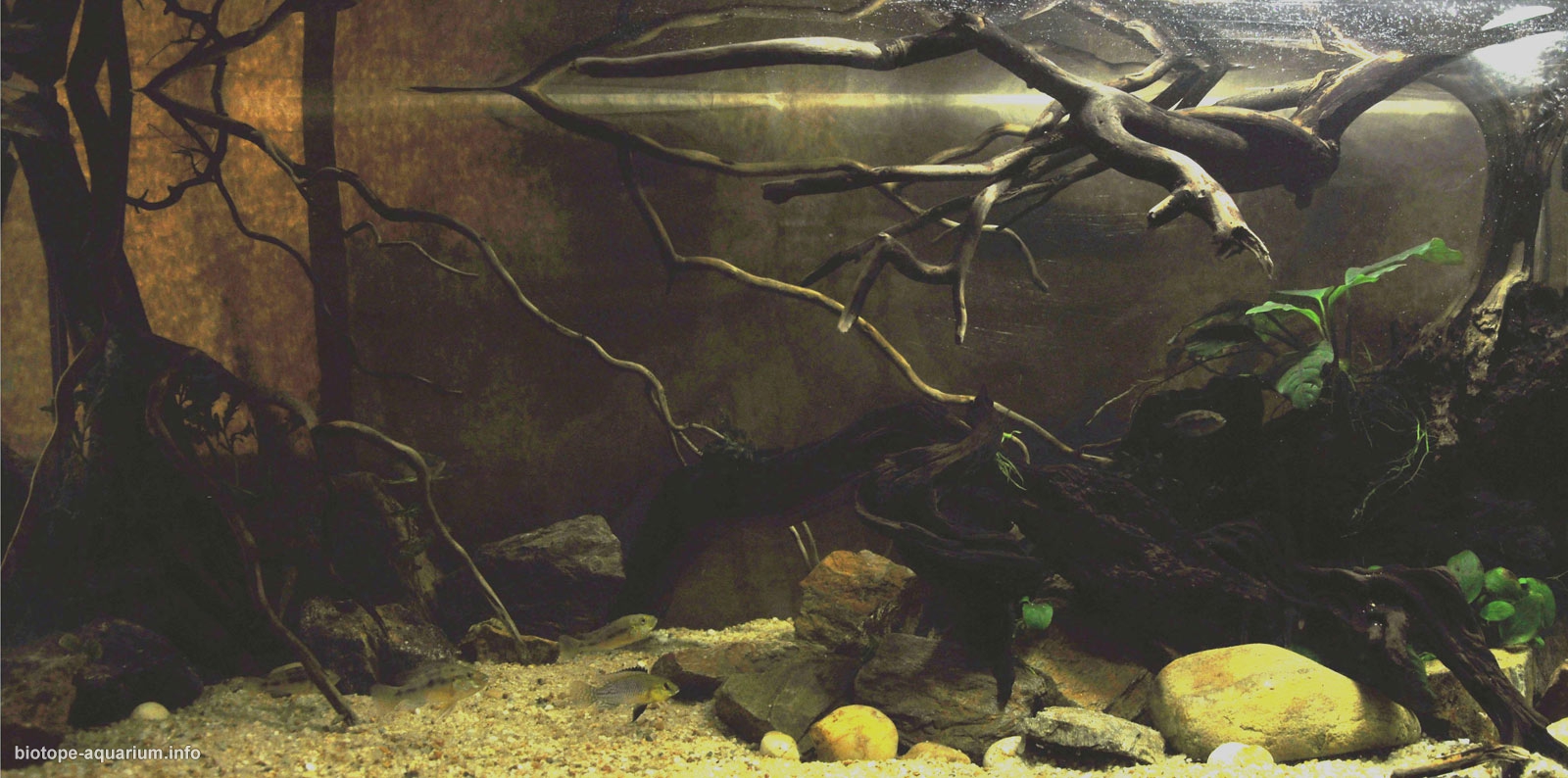Underwater forest of Congo river – Yangambi population
The 25th place in the qualifying stage of the Biotope Aquarium Design Contest 2014
![]() Romania. Visan Emil
Romania. Visan Emil

Volume: 200 L
List of plants: Anubias barteri var. nana, Anubias coffeefolia, Bolbitis heudelotii
Biotope description: In this setup I tried to create a floodplain forest of the central flow of the Congo river inhabited by a colony of Pseudocrenilabrus nicholsi. A population Yangambi as was found by Gosse in 1963. This fish is found in Africa. More precisely, in the east of the central basin of the Congo River (the Ankoro and Upemba Lakes). Type locality for fish is Ankoro (at the junction of the rivers Lualaba and Luvua of Katanga Province, in the south-east of the Republic of Congo (formerly Zaire). Type of P. nicholsi location is outside the Congo Basin forest, but this species was also reported in the heart of central basin area of real rainforest. There are no data on the ecology of this species in the Ankoro, but Gosse (1963) has published this information about Yangambi populations. In this wooded area, P. nicholsi is found in small creeks, tributaries of the Congo River. These habitats are characterized by sandy substrate and detritus. Plants are few, but there are Anubias. On the clear areas of the water supply Bolbitis sp. can be found. Light is dimmed and filtered through the branches and roots. For this I used river sand 1-2 mm, African roots mopani and twigs of willow Torsa. At fixing them I used river stones and tried to make a submerged bank. I fixed on the roots and branches Anubias and Bolbitis, plants living in their natural habitat. For a background I used textil fabric of ocher colour. Pseudocrenilabrus nicholsi is a West African cichlid from the Congo basin (Riehl. etal., 2004). It was originally described as Paratilapia ventralis (Pellegrin, 1928). It has also been known as Haplochromis ventralis, Hemihaplochromis ventralis or Pseudocrenilabrus ventralis. P. nicholsi, is spectacular especially colorful male, that reach length of 8.5 cm. The female is smaller with about 5 cm and has more diluted colors. Males have a variety of colors. In general, the half of the face is bright yellow, which begins to change to blue for the back half of the body. The lips are bright blue. Unpaired fins are represented by red and blue. Pelvic fins are black, edged with white. Pectoral fins are yellow. Behind the gill cover to the back of the fish, there are red spots on the edges of flakes growing in numbers as you go further back on the fish. These cichlids are quite aggressive for their small size. They need to be kept in small groups with more females than males. They spawn quite readily in an aquarium. They spawn on the substrate or rocks. Females keep the eggs in mouth. The eggs are taken from the mother immediately after fertilization. Incubation lasts 2-3 weeks depending on the temperature and the fry is quite small. I needs very small food. The fishes are usually good mothers in the first week. The aquarium should have many places where females can hide. Males are aggressive towards females who do not respond to their advances. They live well at 22-25°C and pH of 6-8.

My 4th place was Underwater forest of Congo River – Yangambi Population. Simply as it was an exact Ps. nicholsi habitat (and not as the 3rd place), besides had an excellent description of the biotope and area, very well done. Unfortunately others placed it in the 9th position, definitely incorrect placement. Naturally as hardly any one of the judges knew where and how this beauty lives. Sorry Emil Visan, but you did a great job. Thanks for reminding me of that biotope.
